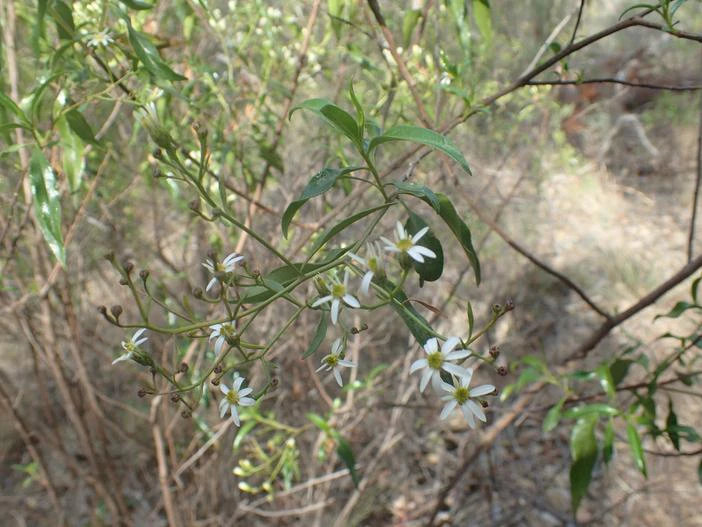Sticky Daisy Bush
(Olearia elliptica)
Sticky Daisy Bush (Olearia elliptica)
/
/

Geoff Derrin
CC BY-SA 4.0
Image By:
Geoff Derrin
Recorded By:
Copyright:
CC BY-SA 4.0
Copyright Notice:
Photo by: Geoff Derrin | License Type: CC BY-SA 4.0 | License URL: https://creativecommons.org/licenses/by-sa/4.0 | Uploader: Gderrin | Publisher: Wikipedia Commons
























Estimated Native Range
Climate Requirements for Daejeon, Korea, Republic Of
| This Plant | Your Site | Plant Suitability for Your Location | ||
|---|---|---|---|---|
| • Precipitation | 20" - 79" | 51" | Aquatic | Aquatic |
| • High Temp. | 70°F - 92°F | 87°F | Your summer temperatures are normal for this plant. | Excellent |
| • Low Temp. | 31°F - 56°F | 20°F | Your winter temperatures may be too cold for this plant | Too cold |
This plant may not grow well at your location - your precipitation is too high.
Summary
Olearia elliptica, commonly known as the Sticky Daisy Bush, is a shrub native to coastal heathland and dry sclerophyll forests in New South Wales and Queensland, eastern Australia. This species is part of the diverse Asteraceae family and thrives in its native habitat, which includes sandy soils and areas with good drainage. It typically grows to a height of 2 m (6 ft 7 in) and is recognized for its scattered, curved, elliptic leaves that are sticky to the touch on the upper surface, with a paler green underside. The Sticky Daisy Bush is notable for its white, daisy-like flowers that bloom in summer and autumn, with each flower head consisting of 8 to 23 white ray florets encircling 8 to 30 yellow disc florets. These flowers are arranged in loose clusters at the ends of branches, adding to the plant’s ornamental appeal.
The Sticky Daisy Bush is valued for its adaptability to cultivation, with a preference for acidic soils and its ability to grow in both part shade and full sun. It requires medium amounts of water and well-drained soil to thrive. Gardeners often use this shrub for border planting, as a feature in native gardens, or for informal hedges due to its attractive foliage and flowers. While it is generally easy to maintain, it can be susceptible to root rot in poorly drained soils. It is also important to note that the Sticky Daisy Bush can become leggy if not pruned regularly to encourage bushier growth.CC BY-SA 4.0
The Sticky Daisy Bush is valued for its adaptability to cultivation, with a preference for acidic soils and its ability to grow in both part shade and full sun. It requires medium amounts of water and well-drained soil to thrive. Gardeners often use this shrub for border planting, as a feature in native gardens, or for informal hedges due to its attractive foliage and flowers. While it is generally easy to maintain, it can be susceptible to root rot in poorly drained soils. It is also important to note that the Sticky Daisy Bush can become leggy if not pruned regularly to encourage bushier growth.CC BY-SA 4.0
Plant Description
- Plant Type: Shrub
- Height: 2-3 feet
- Width: 1-2 feet
- Growth Rate: Moderate
- Flower Color: White
- Flowering Season: Spring, Summer
- Leaf Retention: Evergreen
Growth Requirements
- Sun: Full Sun, Part Shade
- Water: Medium
- Drainage: Medium, Fast
Common Uses
Bird Garden, Border Plant, Groundcover, Hedges, Low Maintenance, Potted Plant, Rock Garden
Natural Habitat
Coastal heathland and dry sclerophyll forests
Other Names
Common Names:
Scientific Names: Olearia elliptica, Phaseolaster elliptica, Aster ellipticus, Aster illitus, Eurybia illita, Olearia illita, Phaseolaria elliptica
GBIF Accepted Name: Phaseolaster elliptica (DC.) G.L.Nesom